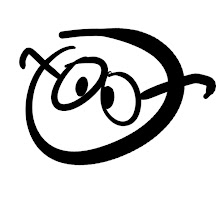I include here my personal review of the fantastic book Alla Prima by U.S. painter Richard Schmid. If you can place your hands, eyes and mind upon that book, don't hesitate to learn from it.
Title: Alla Prima (Everything I Know about Painting)
Publisher: Stove Prairie Press (Manchester Center, Vermont, USA)
2004
Paperback
193 pages
ISBN-10: 0966211731
ISBN-13: 978-0966211733
I can hardly praise this book enough. It is full of experience and concrete knowledge.
The text is made of 10 chapters, plus an introduction:
1. Good ideas and free advice
2. Direct painting
3. Starting
4. Drawing
5. Values
6. Edges
7. Color and light
8. Composition
9. Technique
10. The magic
The book is full of Schmid's paintings, almost all of them oils.
WHAT THIS BOOK TEACHES YOU:
It teaches you how to OBSERVE 3-D REALITY AND TRANSLATE IT ON A FLAT SURFACE AS DIRECTLY AS YOU CAN. The way of achieving it is to paint LIGHT ITSELF (what you see), not the very object with descriptive minutiae (what you know). Meticulous and painstaking painting tends to be naive in most hands.
Schmid asks you to clear up your mind and trust your instinct. THE HOW BECOMES OBVIOUS ONCE YOU UNDERSTAND THE WHAT AND THE WHY.
Some of his most insistent advices are: keep it SIMPLE; don't overwork; don't use ostentatious techniques; don't make random guessing brushstrokes; do a minimum of trial and error (correction wastes time); rather be BOLD than shy, but do it without hurrying and without any thoughtless bravado. Also, EXCESSIVE BLENDING IS LIKE MUMBLING WHEN YOU SPEAK.
He teaches you that, as you start, you sholud focus on one specific problem. Set a GOAL and do it in the time available. Limiting your time helps to SIMPLIFY your works. SIMPLIFY values by SQUINTING. If edges remain sharp when you squint, paint them sharp; if they go fuzzy, paint them fuzzy. Trust your squinting.
Schmid insists on the fact that, unlike common belief, most mistakes happen with drawing not with colour. He says there is no comprehensive colour law; but there's something close to it: COOL LIGHT PRODUCES WARM SHADOWS, AND WARM LIGHT PRODUCES COOL SHADOWS. His palette has as many as 12 colours, not one more, because more than that is unnecessary (and often, the fewer colours, the better), as we can see in the colour charts--a perfect way of mixing all colours with one another until exhasusting all possible combinations of two colours plus white. (Besides, don't overmix, or else you'll obtain MUD colour.)
He recommends: Cadmium Yellow Pale, Cadmium Lemon, Cadmium Yellow Deep, Yellow Ochre Light, Cadmium Red, Terra Rosa, Alizarin Crimson, Transparent Oxide Red, Viridian, Cobalt Blue Light, Ultramarine Blue Deep, Titanium White. There is no black, since he uses different mixtures of browns or reds with blue for getting a substitute for black.
He says what good lighting is for painting.
His ideas about colour harmony and composition are very down-to-earth and full of common sense. No mystic babblings or over-intelectualized theories.
WHAT THIS BOOK DOESN'T TEACH YOU:
It doesn't deal with technical intricacies about different kinds of canvases, papers, grounds, turpentine, brushes, easels, palettes, and materials in general. (Pigments do have his full attention.) It doesn't ignore technique, but it's not the core of the text. (For that subject, you can read Ralph Mayer's book on materials.)
Since the book deals with painting in general no matter what medium you use, it doesn't speak about classical Old Master examples (no Leonardo, Velázquez, Rembrandt, Hals, Rubens or any painter in particular). You can apply the lessons to oils, acrylics, tempera, gouache, or even watercolour. By the way, there's a very brief part about using the palette knife, which obviously couldn't be applied to watercolour, for instance.
Since the book focuses on Direct Painting the way Sorolla, Sargent or many late-19th century arists did (without mentioning them much), you will find no details about Renaissance or Baroque ways of applying paint. There are not many words about glazing, for instance. There are no words about perspective or anatomy, either, for this is not a handbook for painting specific subjects, but about how to observe light and colour in general.
I love this book! Had I found and read it a long time ago, I wolud have saved years of an agonizing, careless and method-less hit-and-miss process that had no sense at all in my learning.
Schmid has a very specific method. Maybe it's not meant for all painters, but if you love Sorolla or Sargent, this is THE METHOD for you, no matter whether you are a mere beginner or an experienced artist. And even if you aim at a very different style than that of the artists just mentioned, this book can help you a lot. Trust me!
(By the way, Schmid gives very good advice at his site: http://www.richardschmid.com/.)
I love this book! Had I found and read it a long time ago, I wolud have saved years of an agonizing, careless and method-less hit-and-miss process that had no sense at all in my learning.
Schmid has a very specific method. Maybe it's not meant for all painters, but if you love Sorolla or Sargent, this is THE METHOD for you, no matter whether you are a mere beginner or an experienced artist. And even if you aim at a very different style than that of the artists just mentioned, this book can help you a lot. Trust me!
(By the way, Schmid gives very good advice at his site: http://www.richardschmid.com/.)
.








No hay comentarios:
Publicar un comentario